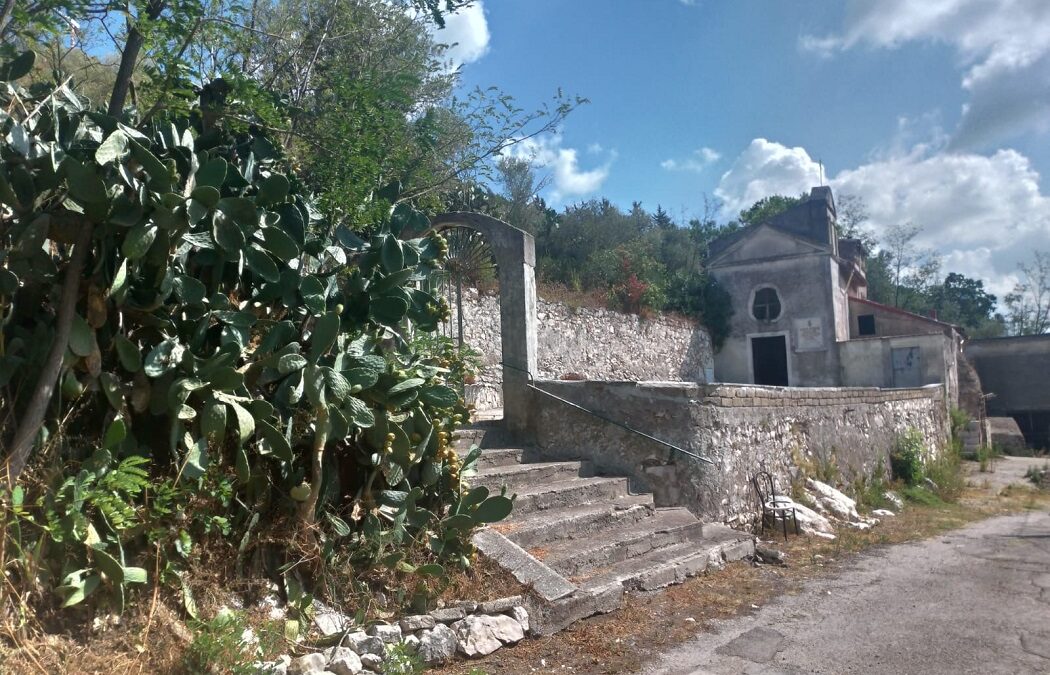As I approached the small chapel, in my view ahead, an overwhelming feeling of discovery occupied my thoughts. Could it be that this place had not been experienced by others or so it seemed for a very long time? It was abandoned, forgotten and the feeling that time stood on end here gripped me. I knew and could feel it all around me as I approached. Stucco walls of tuffa reflected a dull glare. The chapel had been beaten down and neglected but it stood on its rocky perch clinging to hope, as if in defiance. I could not help but think of how beautiful it all was. The placement of the tower in alignment with the main road, the plinth on which it stood crumbling but still intact. The diagonal approach to the small gated archway that led to the small flight of steps all designed with a purpose. Its piazza raised from below with three majestic trees of cypress. From here the main entrance to the modest barrel vaulted chapel came into focus. As I approached the entrance door I realized I was in an outdoor room. The space was sculpted so powerfully and bounded by four defining edges. The mountain above, the chapel wall, a continuous bench and the view of the town in the distance. I looked up and saw the clear azure sky and thought to myself this place is heaven.
On a level of pure thought, light and air are the tools skillfully used by the architect of the Saint Angelo chapel, embedded into the landscape and walled from intruders; it was a pure example of medieval design dating from the early 12th century. This small chapel on a lazy day in August gleaming in the sunlight, more than 28 years ago left a profound memory in me. In the hill towns of southern Italy, family and home are rooted deeply within the landscape. Walls emerge from the medieval domiciles of long forgotten towns. Garden and wall sustain and protect.
Architecture is about creating memorable spaces and “the good life”. We strive today for this goal in our architecture.

